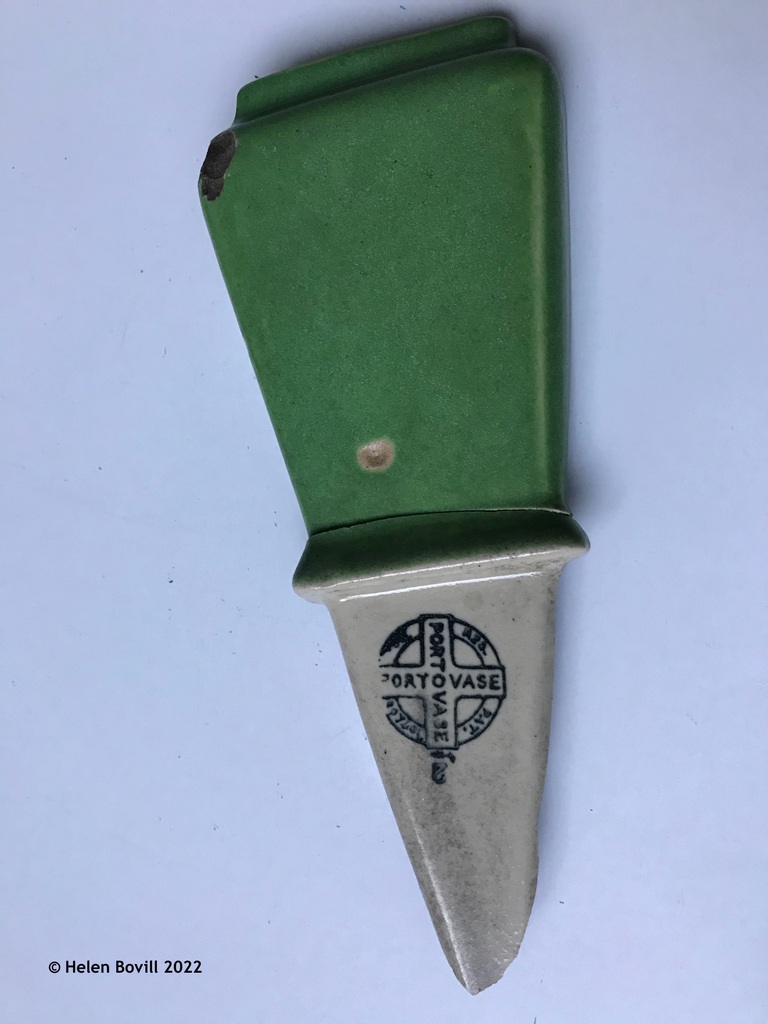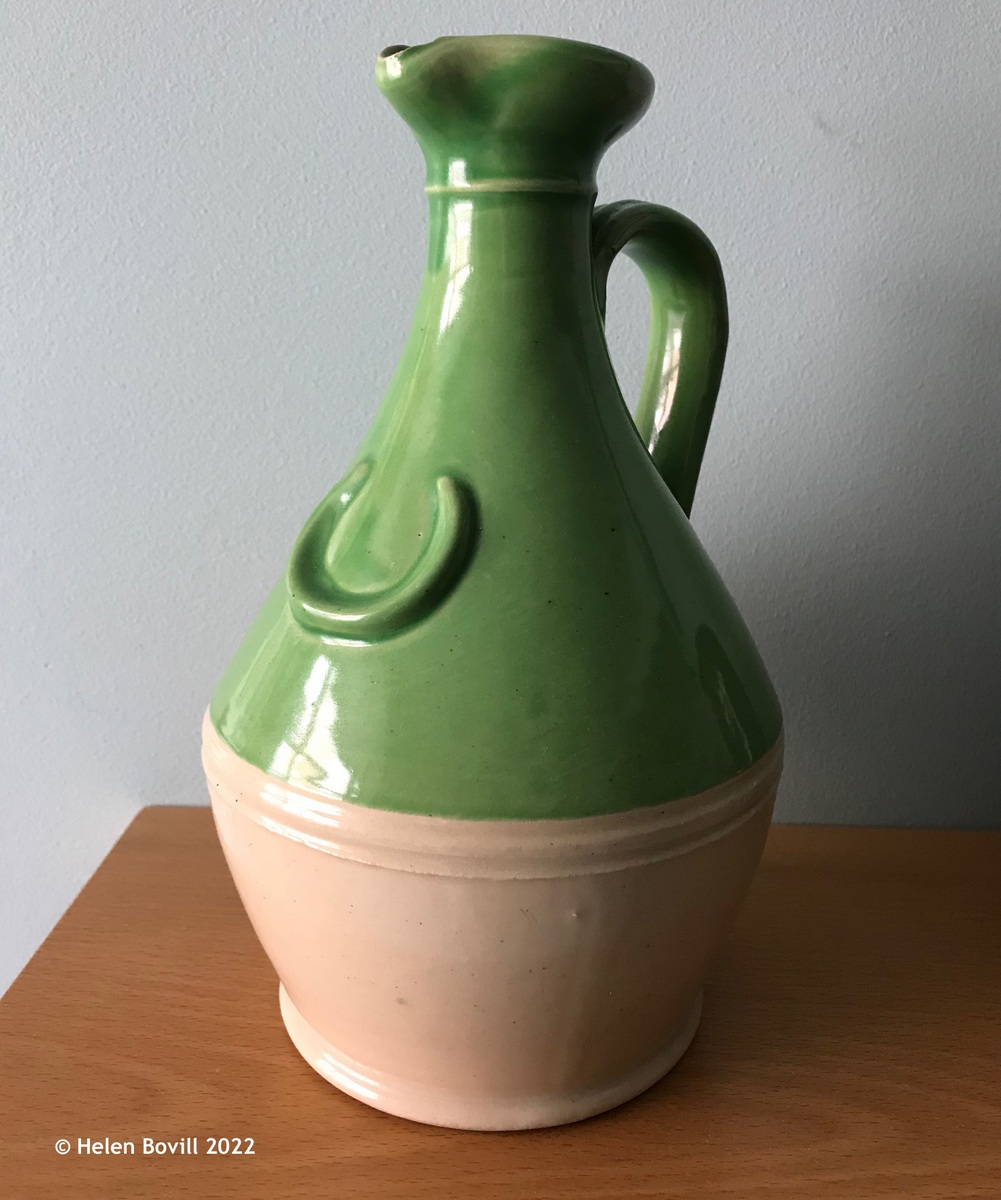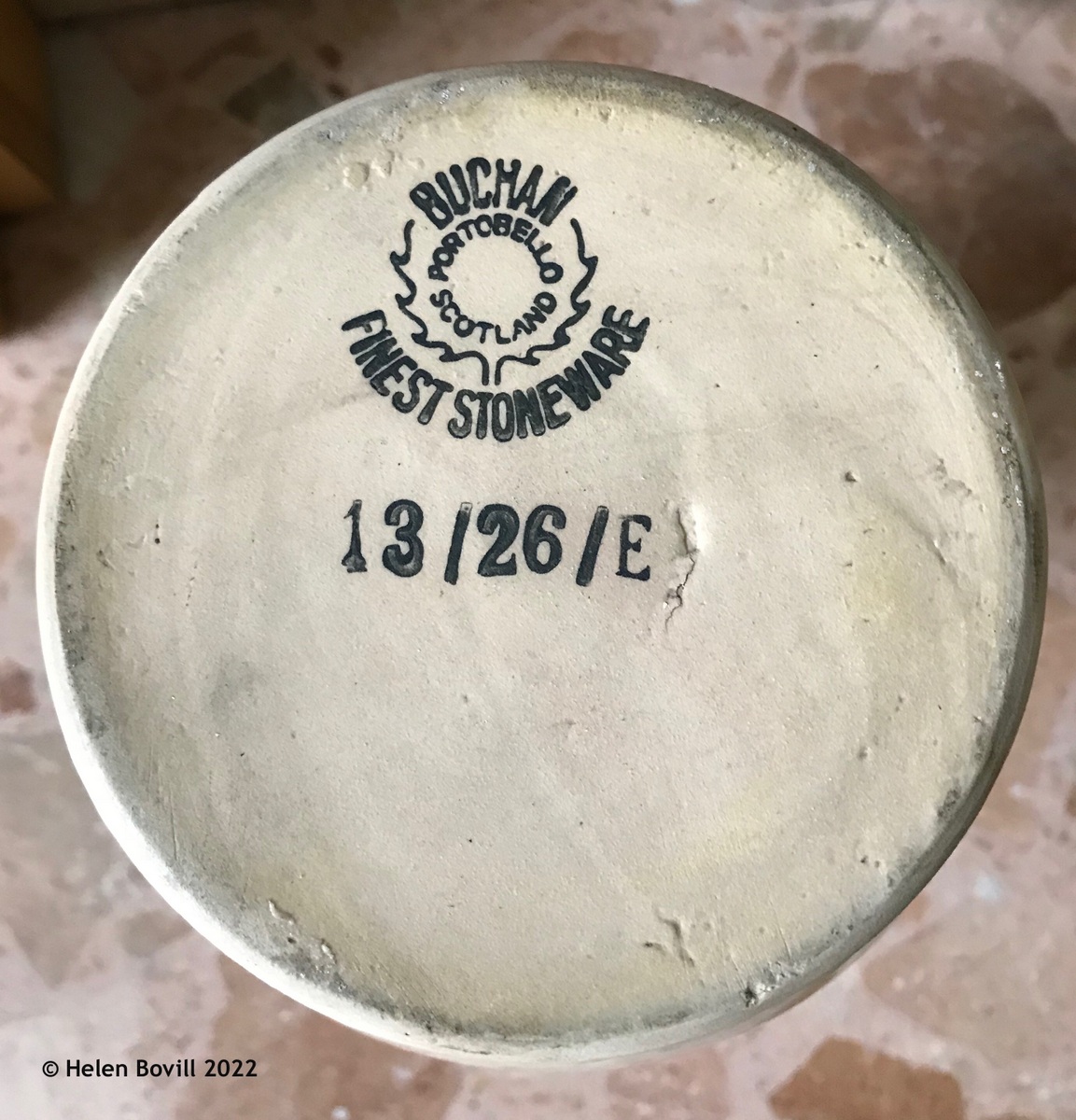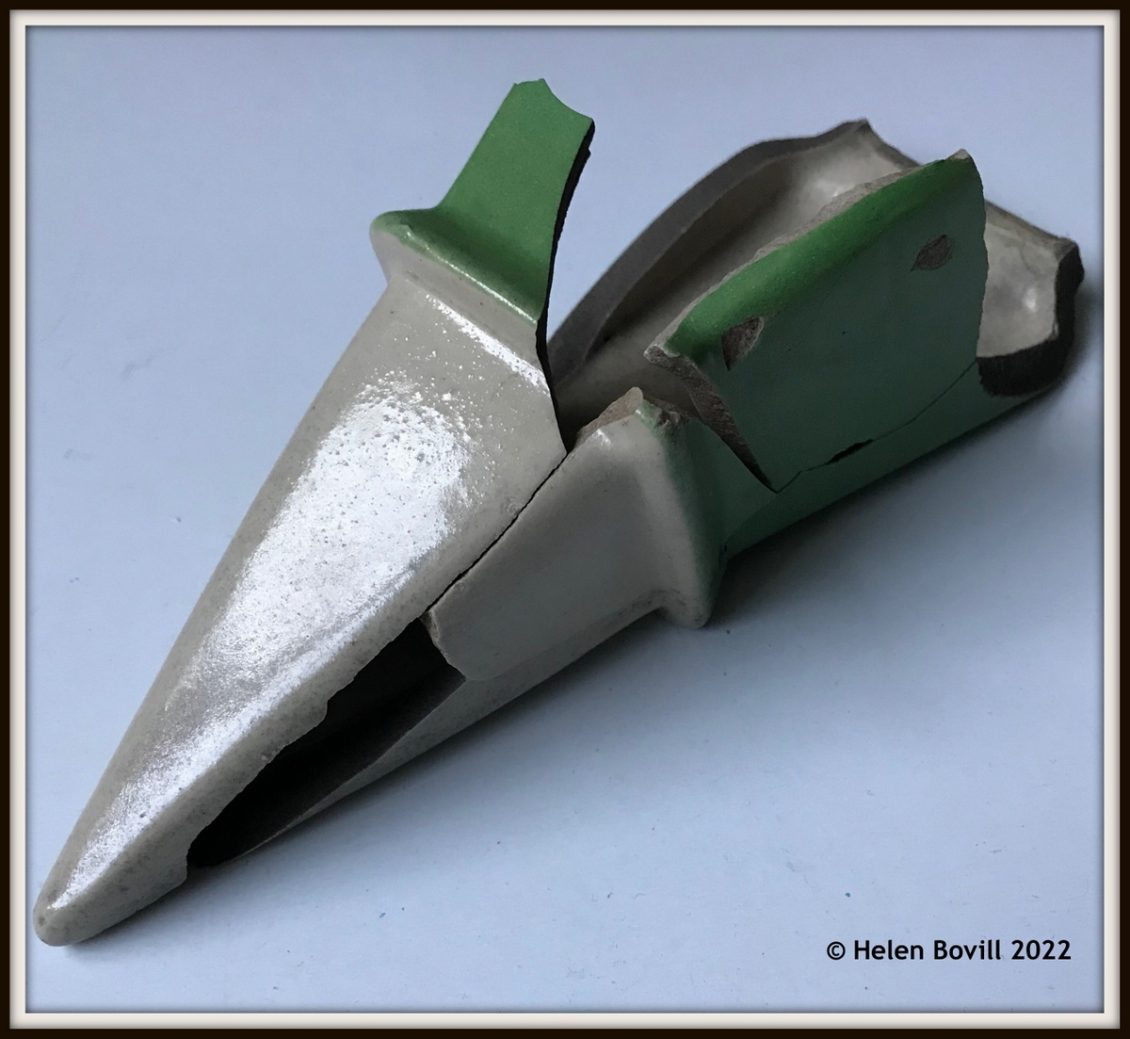And Now For Something Completely Different
And on a subject that hasn’t been covered here before as far as I know.
Earlier this year the volunteers were working in an area near the Quaker Burial Ground where several headstones still remain in place, and they found some interestingly shaped pieces of pottery just beneath the surface of the soil. I could see they came from a pointed shaped vase so I took them home to clean them up. I was hoping I had enough pieces to make a whole vase. Unfortunately, this was not the case so the photo shows the pieces just laid in place, not glued or attached at all. The vase is 9” high.
I’ve now placed the pieces inside a padded bag with a label saying where they were found. They are now stored in a safe place inside the volunteers’ cabin in the cemetery so that if anyone should wish to look at them in the future then they can do so.
I was intrigued by the word “Portovase” on one of the pieces and wondered if this was short for “portable vase”. I found out that the “Porto” part is actually short for Portobello in Edinburgh, where there had been a pottery works since well before 1867.

The company at the site in 1867 was bought by Alexander Willison Buchan and Thomas Murray that year and they traded as Murray & Buchan until Murray left and then the company became A W Buchan & Co in 1882.
The company’s main products were utilitarian items such as stoneware storage containers, whisky jars and flagons, and in 1926 they patented a graveside vase designed to screw into the ground. The name “Portovase” became one of their trademarks in 1949.

As can be seen, it was made in a few different sizes and designs although I am not sure if the vase the volunteers found is one of the smaller or larger ones.
So the vase was made in Edinburgh sometime after 1949. They were mass-produced from two-part plaster of Paris moulds and the general appearance and quality of the glaze in all the photos suggests it was a relatively inexpensive item. There are blemishes on most of the vases shown in the photos, including on the one the volunteers found. In the second photo there is a circular mark on the green part of the glaze where a bubble has popped out early in the firing process and the repair has not been done very well. It is still an interesting piece of social history though, and there is even one in the Museum of Edinburgh.

I wonder if this is an earlier model? It’s certainly more ornate yet still has some flaws in the glaze. I wonder if the screw design was replaced by the simpler, smooth design of the one the volunteers found? But despite the flaws, these are still really nice vases in both design and colour.
Early in the 20th century the company also started making some more decorative homewares such as mugs, plates and dishes, many of which can still be found on eBay at quite reasonable prices. The company moved to Crieff in Perthshire in 1972 but ceased trading in 2000.
Many thanks to Andy Lister for some invaluable insights into the manufacturing processes used in the production of these vases. And my thanks to @museumofsteve on Instagram for the photo of the vase in the museum. My thanks also to The Pottery Studio, The Scottish Pottery Society and the-saleroom.com for the information I found on their websites that helped me to piece together the fascinating history of this vase.
And finally, by way of a footnote, I liked the look and colour of the vase so much that I searched online to see if I could find one for sale. I wasn’t successful but I did manage to find an original Whisky jug in the same colours so I bought it. My work in the cemetery seems to have a way of leading me down some unexpected paths!





Very interesting article Helen. I hope that the whisky jar will not remain empty for long.